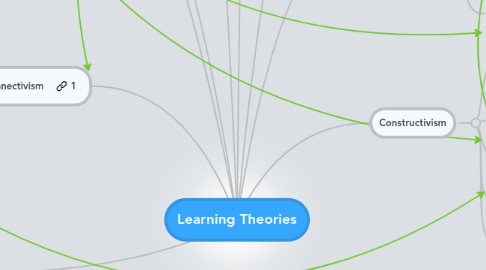Learning Theories
by Matthew Bullock


1. TPACK is a model that most learning theories fall into whether they fall under one aspect or another. It also helps to explain teaching in the modern age.
2. Content
2.1. What is being taught, what is the subject matter
3. Connectivism
3.1. Learning happens through connections to knowledge that already exists. Learning happens through accessing it.
3.2. Learning theory for the modern age
3.3. PLN's
3.4. learning happens with a social network. multiple people.
3.4.1. Inventions: webmail, facebook, twitter, my space, youtube.
3.5. Involves a collaboration of people
4. media ecology
4.1. The study of media as an environment. It is a product of people as a society and not the other way around. Society forms the media that fits and works for it; media does not form society.
4.2. technology is a product of learning as a society.
5. TPACK
5.1. Pedagogy
5.1.1. Is the medium in which we share the information or the content. This is the area that is changing the most quickly in the TPACK model.
5.1.2. Methods of teaching, what works and what doesn't. This is developed from experience and observation of other teachers.
5.2. Technology
6. Behaviourism
6.1. Mind is a black box
6.2. Operant conditioning.
6.3. behavior can be calculated and conditioned depending on a particular stimulus given.
6.3.1. This is accomplished through this is accomplished through; modeling, shaping, drill and practice.
6.4. largely reward or punishment based.
6.5. learning happens within a person
7. Cognitivism
7.1. The mind is a computer with working memory and a massive harddrive
7.1.1. we can under or over load working memory
